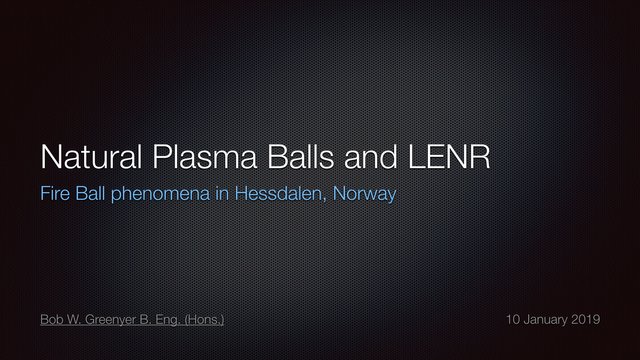
Video 1: Overview playlist reviewing this blogpost
Arial light phenomena, Hessdalen, Norway
First reported in the 1930s, since the early 1980s there has been wide observations of balls of light in the sky, often on clear days, over a valley in Norway, this is a recording of one such event.
The phenomena is so common that it has an entire website dedicated to it called "Project Hessdalen". In this video, one researcher talks of his experience:
"The last object we saw, had the size of a barn. It briefly disappeared, and when it reappeared, it had the shape of a fiery ball. It stopped shining and soon after two smaller lights appeared. They crashed into the ground right over there. As it hit the tree tops, a blue spiralling beam of light emerged. This blue beam hits a tree top over there. After the impact, it changes it's spiral movement.
Here is the result of the two collisions and the resulting spiral movement. The arrow is pointing to the second collision point on the long exposure.
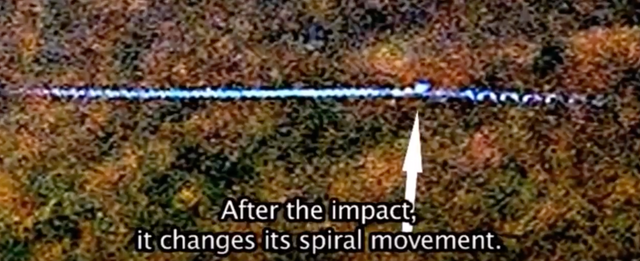
Fig 1: Impact of fire ball with tree results in broken spiral beam that further spreads and becomes more discontinuous on secondary tree impact SOURCE
These two beam sections look a lot like massively blown up so called 'Strange Radiation' tracks (SR tracks), which seem to be a signature of LENR. For which, there are several explanations, for instance 'Electron Mediated Nuclear Reactions' (LENR SR tracks on Slide 33 - 35), this author has suggested that SR is caused by the de-stabilisation and/or fragmentation of large stable clusters of Exotic Vacuum Objects (EVOs) that are collectively the 'Active Agents' in LENR processes and has directly suggested they are micro analogues of Ball Lightning. Kenneth Radford Shoulders, the man that discovered EVOs, said that EVOs don't like impedence changes and can 'dishevel' as a result, well, going from air to wood would fit the bill. Other examples of discontinuous Hessdalen phenomena tracks; 1984 2013
In the same video, it reports that the spectra of the fire balls shows presence of Scandium (Sc), which is a theoretical George Ohsawa reaction product which was not observed in MFMP testing of the NOVA plasma reactor, possible reaction chains are discussed here. It must be noted however, that Scandium can be synthesised from nucleon exchange reactions starting with elements in the minerals Euxenite and Gadolinite that are abundant in Scandinavia. Additionally, the Hessdalen valley is rich in Zn, which has a number of net positive nucleon exchange reactions producing Sc 1,2. The same can be said for Cu 1,2.
Using the observations reported from Hessdalen, including spectral observation of O, N, Si and Sc which are in line with those observed for natural ball lightning in China which also observed Ca and Fe, and the above nucleon exchange reactions, it should be reasonably straight forward to make an educated guess as to optimum elements to synthesise Sc if LENR is a related phenomenon.
2002 Italian "Optical and Ground Survey in Hessdalen"
A study was carried out of the Norwegian phenomena in 2002 by Massimo Teodorani, Ph.D. an Astrophysicist from CNR – Istituto di Radioastronomia, Via Fiorentina, Medicina (BO), North ITALY and Gloria Nobili a Physicist from Museum of the Physics Department, Bologna University, Bologna, North ITALY, the points below are taken from the draft report linked above, however, the more extensive peer-reviewed version can be read here. Here is the most updated version presented at CNES-GEIPAN in Paris July 2014.
Some interesting extracts and comments:
On the estimated amount of power to create such an effect
"Photometric analysis shows that the light-phenomenon is able to produce a luminous power of up-to 100 kW"
In explaining that the phenomenon may be similar to a proposed model of Ball Lightning, put forward in 2000 they say
"there were no lightning discharges when the light-balls were recorded, but some other type of electric discharge may occur in the valley due to a strong abundance of copper and quartz of which the Hessdalen area is very rich and which can cause piezoelectricity very efficiently"
The ball lightning model they are referring to is discussed here
Essentially nano particles of silicon metal, silicon monoxide, or silicon carbide, formed in the ground during a lightning strike, feed a ball of light.
"Lightning penetrates below the surface of the soil and heats a certain portion of it to quite high temperatures, so that it vaporises," Dr Abrahamson told the BBC.
"And then, when the lightning strike has finished, the vapour is free to erupt, to appear above the ground in the form of a ball. The jet of hot gas will be very much the same as the jet coming out of one's mouth when one blows a smoke ring - it forms a little re-circulating vortex and it's quite self-contained."
The Chinese spectrographic study cited above does subscribe to the Abrahamson-Dinniss theory. Also, the theory calculated that the rate of heat release is estimated at 79.0 kW per m^3 of ball volume. Taken together this appears compelling, indeed, in 2013, Tel Aviv University used microwaves and Silicon to create visually similar phenomena. However, this still does not explain many ball lightning observations, such as the spiral and discontinuous paths observed at Hessdalen.
Dr George Egely reported one case where a ball lightning travelled alongside a moving train carriage and then touched the aluminium window frame. The source of the report then described how he was able to manipulate the cold aluminium of the frame with his fingers for around 20 mins. In another case, all of the wire in a house exploded and vaporised during an interaction. These cases potentially point to some strange electron interaction phenomena underway. Moreover, Ken Shoulders created balls of light out of self-organising electrons in apparatus that had no opportunity for chemical reactions, but which synthesised new elements.
The range of observed phenomena keeps fertile minds active, here is a less chemical and more charge-separation based model from 2010, by D. B. Muldrew, called the 'Solid charged-core model of ball lightning'. In the document, he cites Singer, 1972 - "BL is formed by high-energy events such as lightning, volcanoes, tornados, earthquakes and meteors."
Since there is typically no lightning before emergence of the Hessdalen light balls and no lightning during the Italians study, they may be suggesting that sudden discharges of static electricity, caused by geology, can initiate the same phenomena in addition to the modes recorded by Singer.
As an interesting aside, for those with long-term interest in LENR. The BBC article on Ball Lightning that the Italians refer to, takes an opinion from one Dr Graham Hubler who at that time in 2000, worked at the United States Naval Research Laboratory (NRL) and who later went on to become director of the Sidney Kimmel Institute for Nuclear Renaissance (SKINR) at the University of Missouri where ICCF-18 was hosted - it is very interesting to hear him talk about how SKINR came about.
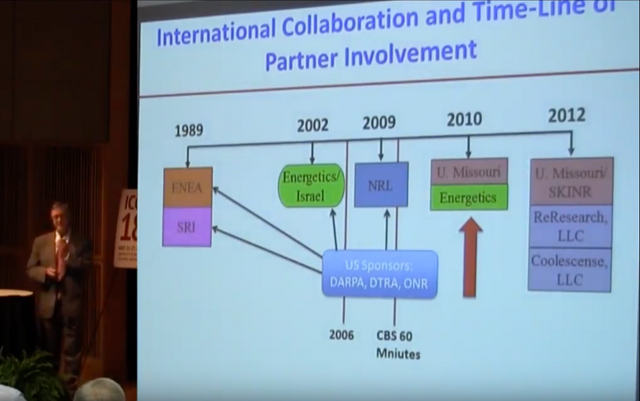
Fig 2: Dr Graham Hubler explaining how SKINR came into being
What maybe missing from the above is SRI's Cluster Impact Fusion thought to have been classified in 1990 which may have been a technology related to that of the same name, reported in 1989 in Science by Brookhaven National Laboratories. Anyway, this is what Dr. Hubler had to say about lightning balls.
"Dr Graham Hubler, of the United States Naval Research Laboratory, who has taken a keen interest in lightning balls, says the research has much promise.
I have followed the theories that have come out over the years, and few can explain all of the features of ball lightning. This one, however, unifies an awful lot of the properties of ball lightning under one theoretical umbrella, so I think it stands a very good chance of perhaps being correct.
It's not necessarily the whole story, or even the story, but the nice thing about it is that it can be tested experimentally. Then we'll know whether this theory has any merit in the future."
It is an interesting statement for a number of reasons, firstly, why, out of all the people in the world to choose from in 2000, did the BBC get a comment from a researcher at the US NRL? Secondly, Why was a US NRL researcher taking a keen interest in lightning balls? Thirdly, why would the same person be, on the one hand, so keen to support a chemical explanation and, on the other, pepper his response with caveats?
The Italian researchers that reported on their Hessdalen visit, mention a number of times that the phenomenon blinked
"In almost all cases the light appeared very close to the ground [up to several 10s of meters], it blinked very fastly with a pulsation-rate of less than one half second and the entire performance lasted from 1 up-to 30 seconds, most frequently 5 seconds."
They also talked about fragmentation
"the light-phenomenon showed to eject a smaller light-ball: this behaviour was very well observed and studied in a previous mission"
As part of the groups work, the researchers collected
"ground-samples which were suspected to be approached by the light-phenomenon"
Increased Radiation and Iron Rich Spheres
Radiation
The research team selected powder samples that appeared to be near where Norwegian witnesses had seen a big "light-ball" in previous months. They chose samples from the interest zone that appeared to present a Geiger tube radiation count rate 2 to 5 times that of background. These were analysed by Dr. Stefano Maretti, SACMI Imola.
In the samples they found Zirconium Silicate, and suggested that this might be the source of the raised radiation counts. This could be from synthesised Zr containing 93Zr.
The MFMP has observed the production of Zirconium (Zr) in at least two LENR systems it has investigated, ECCO part processed fuel and specific ash ejections from 2 consecutive LION experiments. This was discussed at length in this blog post. It is believed by this author that production of Zr, as well as it's pre-cursor Calcium (Ca), is a major signature of Low Energy Nuclear Reactions (LENR). Massive amounts of Ca appeared to be synthesised in Alexander Parkhomov's 225 day reactor.
Bolotov discussed how Zirconium dioxide (ZrO2) was formed from two Calcium Oxide (2xCaO) and we discussed this in this blog post.
In a larger structure on LION 1, we found a slug of material containing a high concentration of both Calcium and Oxygen in addition to Carbon.
The LION core is C loaded with D2O, D will not be detected by Energy-dispersive X-ray spectroscopy (EDS). Some fusion pathways are as follows:
Two Carbons fusing yields Magnesium
Oxygen fusing with Magnesium produces Calcium
Calcium fusing with Calcium produces Zirconium
However, the most abundant isotopes of Carbon and Oxygen do not have enough neutrons, so it may be necessary to breed neutron rich Oxygen from multi-body fusion of C and 2D or to have some neutron production in the process in order to get the full spread of Calcium isotopes. Dr. Alexander Parkhomov is very aware of the limitations of this first basic, though valuable data-set he generated and has prepared a sister dataset that includes potential inverse beta processes driven by cold neutrinos which may account for the production of the needed neutrons.
NOTE: Alexander Parkhomov's data does not consider unstable nuclei and also therefore the reaction 48Ca+48Ca>96Zr is missing. In any case, with fusion only of natural isotopes of Ca, there is no way to observe 93Zr which appears as a trace in nature. However, when considering Bolotov's proposed reaction chain, it can be synthesised. The beta decay of 93Zr leads to the production of the stable 93Nb (Niobium). High concentrations of were Nb found in the ECCO fuel
Without considering energetic favourability, suggested paths to the production of 93Zr using isotopes of Zr and O are
| Zr | O | O | -> | Zr | O | O |
|---|---|---|---|---|---|---|
| 90 | 18 | 18 | -> | 93 | 17 | 16 |
| 90 | 18 | 17 | -> | 93 | 16 | 16 |
| 91 | 18 | 18 | -> | 93 | 17 | 17 |
| 91 | 18 | 17 | -> | 93 | 17 | 16 |
| 91 | 17 | 17 | -> | 93 | 16 | 16 |
| 92 | 18 | 18 | -> | 93 | 18 | 17 |
| 92 | 18 | 17 | -> | 93 | 17 | 17 |
| 92 | 17 | 17 | -> | 93 | 17 | 16 |
| 92 | 17 | 16 | -> | 93 | 16 | 16 |
| 94 | 18 | 17 | -> | 93 | 18 | 18 |
| 94 | 17 | 17 | -> | 93 | 18 | 17 |
| 94 | 17 | 16 | -> | 93 | 17 | 17 |
| 94 | 16 | 16 | -> | 93 | 17 | 16 |
| 96 | 17 | 16 | -> | 93 | 18 | 18 |
| 96 | 16 | 16 | -> | 93 | 18 | 17 |
NOTE: Zr + 2O rather than 2xCa + 2O was chosen as a simplification of Bolotov's proposed reaction to keep the table small.
It may be that the Zirconium Silicate (ZrSiO4) is synthesised when the Ball Lightning hits the ground through interaction with Tremolite (Ca2Si8O22(OH)2) that the Italian researchers observed as present in local soil.
Iron Rich Spheres
In the target powder samples only, they found "a perfectly spheroidal iron particle with dimensions of about 20um in diameter" which they say is unusual in nature.
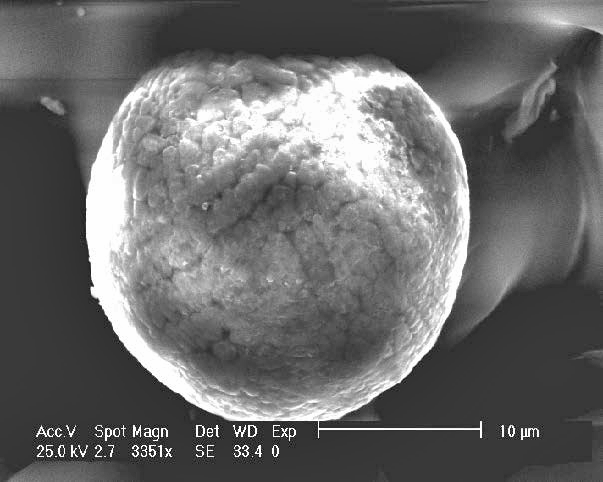
Fig 3: Crenellated iron microsphere from target powder sample SOURCE
MFMP observations of Magnetic Iron Rich Spheres
The MFMP has also observed formation of spheres in recent years in many analysed experiments. During a question and answer session following A.R. Bikmukhametova's - 25th Sochi CNT&BL Presentation on "Natural and artificial long-lived luminescent objects in the atmosphere", this author produced a slide showing evidence of the production of highly magnetic iron rich spheres from LENR experiments and other sources, including plasmatic processes and atmospheric events such as that which occurred in Tunguska in 1908 where nickel rich, magnetite spheres were observed.
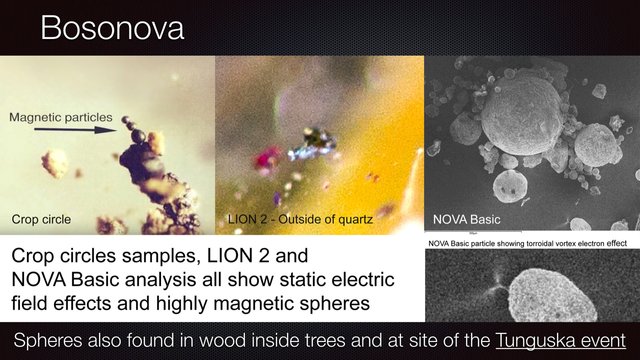
Fig 4: 'Bosonova' sphere slide from 'O day'
The magnetic spheres from LION 2 have yet to be put under high magnification. The largest of the NOVA spheres was 500um across as shown below (NOVA is a microwave based plasma reactor developed by Dr. George Egely, a world expert on ball lightning, that started in this case predominantly with Carbon, Oxygen, Nitrogen and Silicon in the active area).
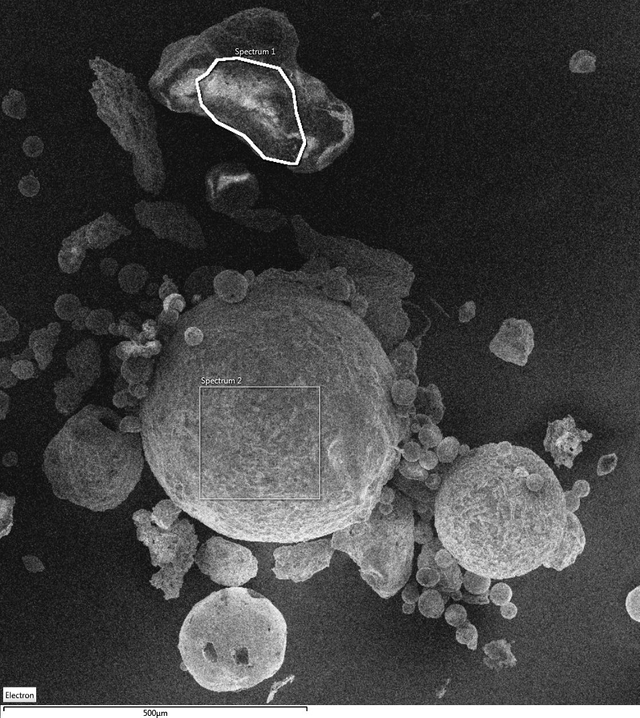
Fig 5: Magnetically separated Silicon Oxide based (smooth globular) and Iron Oxide based (crenellated spheres) particles
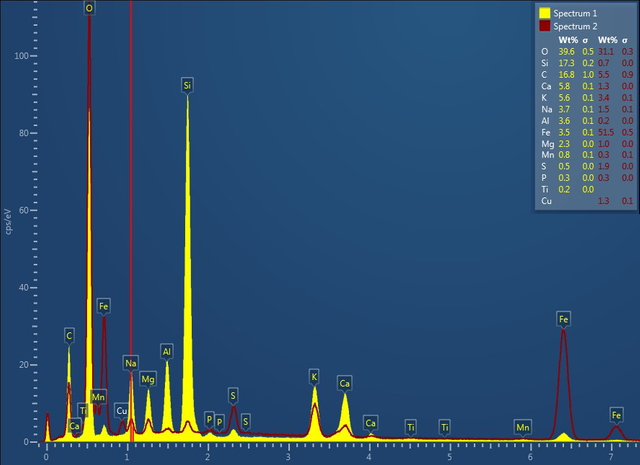
Fig 6: Elemental compositions of the two types of NOVA synthesised particles
Two types of particles were revealed by magnetic separation of NOVA ash. Firstly, a globular smooth surface kind containing a wide range of elements but predominantly Silicon, Oxygen, Carbon and Calcium. Secondly, a spherical kind with a crenellated structure that was predominantly made from Iron and Oxygen. Using this weight % to atom% convertor at the surface, there was a ratio of of Fe:O of 1:2.1 however the ferromagnetic nature of the particles (they stick together by themselves as can be seen in SEM) suggests that they are either Maghemite (Fe2O3) or Magnetite (Fe3O4),
'me356' Observed Crenellated Spheres in late 2016 LENR experiments
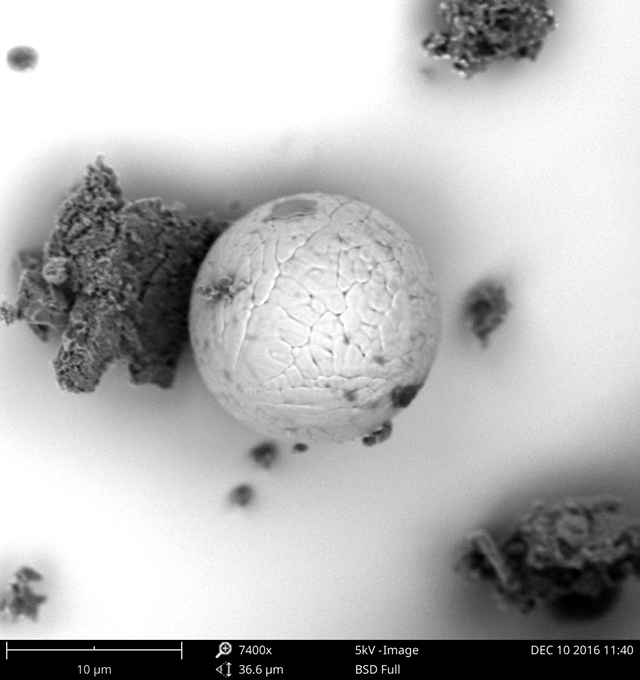
Fig 7: Example of a crenellated sphere observed by LENR researcher me356 which appears to have polar pinching
LENR researcher 'me356' also saw production of crenellated spheres.
An image search on the term 'iron nano spheres' revealed a similar structure claimed to be a 2.7billion years old 'micrometeorite' due to knowing the age of the limestone it was present in. However, this author suggests that is a conclusion that cannot be drawn because of the apparent ability of EVOs to not only synthesise iron rich crenelated spheres, but also to 'teleport themselves and their payload' into other places and materials, particularly into the ground, which will be the subject of a future blog post.
Even if there was no payload in an EVO cluster resulting from lightning or other source. The EVO could have gone into the ground in a 'black' state, and been excited at some depth, transmuting directly the limestone. Limestone is CaCO3, in 1994, published in Fusion Technology, R. Sundaresan and J.Bockris (Texas A&M) replicated George Ohsawa carbon electrodes under water experiment seeing production of Iron suggesting that the reaction was
In addition, there are 16 very net positive nucleon exchange reactions starting with O and Ca that yield all isotopes of Fe. Since the Chinese observed Ca, O and Fe in the BL spectrum, it is possible that EVO cluster driven nuclear exchange process is occurring, though they did not observe 4He, this may be due to produced alpha nuclei immediately synthesising either 12C (triple Alpha) or 16O (quad Alpha).
It is suspected that the spheres found in Australia were synthesised terrestrially, in a similar way to the Hessdalen sphere and are not micrometeorites of extra-terrestrial origin. Some CaCO3 was purchased in 2017 with a view to testing with Carbon in NOVA reactors, if an increased yield of Fe is observed it may provide strong evidence of this reaction path.
Why don't you do an image search on the same keywords above and see what you can find?
Discussion
An Italian expert study of mostly non-lightning related long-lived luminescent objects in the atmosphere above the Hessdalen valley in Norway, appears to show production of a mildly active samples containing a physical structure similar to those observed in LENR research.
Specifically, in powder deduced to have come from previous light-sphere events, increased radioactivity is attributed to detected Zirconium, which is an element that appears to have been synthesised in two different claimed LENR systems; in the ECCO fuel processor of Suhas Ralkar and in LION reactors. In the case of the latter, consecutive experiments yielded production of Zr uniquely in pieces that appear to have been ejected from electromagnetic or other confining structures, formed during the experiments.
Both 93Zr and 96Zr are beta emitters, but the former has a half life of 1.53 x 10^6 years and the latter 2 x 10^19 year. Whilst naturally occurring Zr has only trace 93Zr and 96Zr is 2.8%, the double beta emission rate for 96Zr is vanishingly small, unless a feature inherent to the latent effects of ball lightning is accelerating that decay rate.
The existence of trace 93Zr in natural Zr may be due to it being synthesised on an on-going basis at a very low rate and not just present as the last of the primordially produced nuclei. The high concentrations of Nb in ECCO fuel sample, may be the result of rapid decay of synthesised 93Zr to 93Nb - which is the only isotope of Nb found in nature - in the cavitation LENR process devised by Suhas Ralkar. For this to happen, there would need to be a significant amount of 93Zr synthesised, looking at the isotopic ration of the Zr rich "Question Mark and Tadpole" from LION 2 by SIMS for example may help provide a clearer answer, since, it is possible that 93Nb is produced by stepped synthesis from proton fusion as follows.
90Zr +p > 91Nb decay to 91Zr
91Zr +p > 92Nb decay to 92Zr
92Zr +p > 93Nb
The isotopic concentration of Zr in both ECCO and LION should be investigated for unusually high levels of 93Zr and ECCO part processed fuel should be investigated for the presence of 92Nb, which has a long half life, but is not natural, to help establish reaction pathways.
It must be noted that whilst the Zr containing powder targeted in the Hessdalen study came from different events to those where fire ball spectra were obtained, there was no Zr spectra observed in the fireball. This could suggest that the Zr was synthesised when a fireball interacted with the ground.
Other than the Zr hypothesis, observation of un-corroded iron-rich spheres in the target sample that, according to the analyst, are unusual in nature, is something observed in other atmospheric events, such as during the formation of crop circles (which have also been associated with BL) and the Tunguska event. Suggestions that the latter was due to an extra-terrestrial body causing an air-burst followed by fragmentation are disputed, as despite many decades of research and surveys no one has found reliable evidence of an impacting body. Nickel and Magnetite spheres found in resin of trees, deduced to be from the time, do not prove fragmentation of a meteorite, since these are also produced in LENR experiments.
This author agrees with the Italian researchers that Copper and Quartz in the Hessdalen valley may play a role in the production of the phenomenon. Specifically, this author suggests that the piezo-electric effect, caused for instance by day and night thermal cycles or physical deformation due to freeze thaw, may produce small Exotic Vacuum Objects (EVOs) production that charge the conductive copper deposits, since EVOs seem to want to reside in the most conductive element available. Perhaps the copper sits on an insulating geological feature, so the EVOs can build and build until there is sufficient potential between areas in the ground that a sudden discharge event occurs, resulting in the fire balls. It is also possible that there is a high flux of magnetically influenced cosmic particles or other incident radiation at these latitudes contributing the the phenomenon, indeed, in 2007, Ghislain Bardout, Georges Lochak and Daniel Fargue observed tracks on emulsion at the north pole, similar to Strange Radiation (SR) tracks observed by LENR researchers. Since this author considers SR to also be EVOs, it is suggested that some re-clustering occurs in suitable geology leading or contributing to the effect - the reasoning for this will become clear in a future, evidence based blog, looking at EVO life-cycles.
Schematic for lab generation of Ball Lightning published in 1993
It should be noted also that Nikola Tesla was claimed to have been able to produce ball lightning at will. In the late 1970s the Canadian John Hutchison, observed strange effects on metals whilst replicating some of Tesla's experiments.
During his Tesla inspired research, John Hutchison had created a device he called the “Ball Lightning Projector”. Included in the disclosure, was the type of Tesla coils and Van de Graaf generators he preferred and the ball lightning generating circuit. This was published in the “Electric Spacecraft Journal” in 1993.
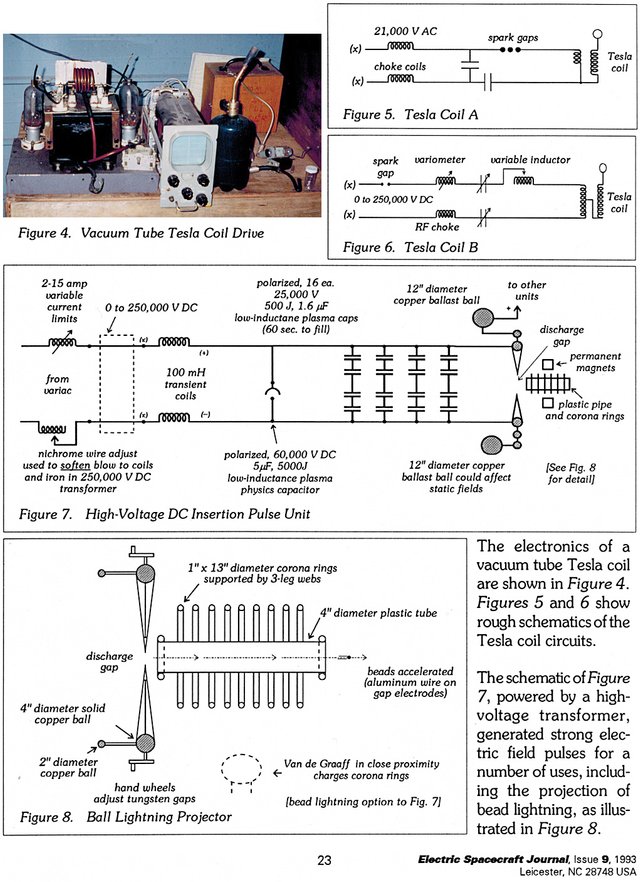
Fig 8: Schematics of ‘Ball Lightning’ generator SOURCE Slide. 10
Note the 4” solid copper balls attached to the spark gap and static electricity source.
John Hutchison comments
My energy source was a 400,000 volts DC or AC switchable transformer made by Siemens, also with banks of 25,000 volt DC low inductance 500 joules capacitors. Then specially configured tungsten spark gaps and forming systems. These where bright, at best less than an inch, plasma balls. I added a magnetic guidance system and corona rings that where electrostaticly charged. To guide the balls out, each corona ring had different charges on them. Fun stuff! - John Hutchison, 18 January 2019
When asked what the copper balls were for, he replied
They are corona suppression for high DC or AC voltage plus they collect static or un-dynamic electricity. In addition, they would collect high RF radio wave. - John Hutchison, 23 January 2019
He then gave these two links; 1. Spark Gap test and 2. Corona rings
Ongoing transmutation in Hutchison Effect samples
On many occasions, Hutchison observed fragmentation of metal samples, Aluminium was particularly susceptible. On examination of these fracture planes, transmutation of the Aluminium was observed and below is data presented in the 'Hutchison File'
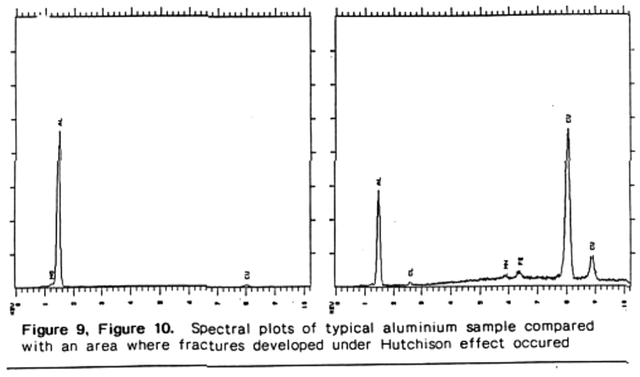
Fig 9: Apparent transmutation in Hutchison Effect treated Aluminium (Al) shows Iron (Fe) and Copper (Cu) production. SOURCE Slide. 37)
These transmutations have been observed in specific structures on MFMP Hutchison Effect samples as well as in other LENR systems.
Moreover, testing of Hutchison Effect samples in the 1980s in Germany, showed that not only had transmutation taken place, but that the affected material continues to change.
”In Germany, I found that the samples had been transmuted; that they kept on changing their characteristics.” John Hutchison, 1988 SOURCE Slide. 45
This is similar to observations by other LENR researchers and is why it was suggested above that it may also occur in soil samples that have interacted with Hessdalen fire balls.
MFMP testing of some 'Hutchison Effect' samples has revealed interesting isotopic anomalies in the product elements apparently formed during transmutation, this will be the subject of a future blog post.
Black hole hypothesis for the Hessdalen phenomena
Lastly, the Italian researchers include in Appendix 3 of their report, an 'old' hypothesis for the formation of the Hessdalen lights. Essentially the idea is that it is due a "A normally invisible 'mini-black hole' or something simulating it entering our atmosphere". They then say it may be due to an effect similar to a hypothesis put forward in 2000 for the formation of ball lighting - a toroidal vortex of hot particles driven by extreme electric discharge from lightning. It is funny to read this, since this author would consider it is toroidal vortexes of electrons, AKA EVOs, carrying ions that appears to cluster to create an analogue black hole - so the truth may lie somewhere in the middle.
Conclusion
Apparently natural atmospheric plasmatic ball observations yield data that is in line with multiple low energy nuclear reaction systems observed by the Martin Fleischmann Memorial Project, suggesting that there is a link between the two.
The possible relationship of mineral deposits local to daytime, non lightning related fire ball phenomena should be investigated. Ball lightning observations not due to lightning may become a method of discovering mineral deposits.
An attempt to see if there is any correlation between the observation rate and solar, magnetosphere or cosmic phenomena should be considered.
Dr. George Egely Ball Lightning work
Hungarian Ball Lightning Studies
Energy Transfer problems of Ball Lightning
On 10th January, Dr. George Egely was asked by this author
"What is the weirdest thing you consider that ball lightning has does"?
to which he replied
The most obvious is when it appears all of a sudden right in front of you, without any apparent reason. There are hundreds of these cases. They violate the following laws:
- Conservation of electric charge,
- Conservation of energy,
- Conservation of mass,
- Conservation of linear and angular momentum.
Practically everything that is sacred in physics!
This is very similar to the findings that Kenneth Shoulders reported in 2010 for EVOs
John Abrahamson et al recent observations
Sightings of ball lightning: observations collected by correspondence and Russian and Ukrainian sightings
Similar observations at an impact crater in Finland - Tip off: Pekka Janhunen
Thanks to Andrew Johnson for forwarding the initial information about this phenomenon
If you appreciate this work and want to see more of it, please consider joining those, like you, who have helped make this possible.
To donate to the project, go here
To donate to the author of the presentation, go here
This post has been voted on by the SteemSTEM curation team and voting trail in collaboration with @utopian-io and @curie.
If you appreciate the work we are doing then consider voting all three projects for witness by selecting stem.witness, utopian-io and curie!
For additional information please join us on the SteemSTEM discord and to get to know the rest of the community!
Downvoting a post can decrease pending rewards and make it less visible. Common reasons:
Submit
Comment from Susan L. Yost
She not only sent a better scan of the circuits,
but also a colour image of the Vacuum Tube Tesla Coil Drive.
So the blog post has been updated.
Huge thank you to Susan L. Yost.
Downvoting a post can decrease pending rewards and make it less visible. Common reasons:
Submit
Comment from Dr. George Egely
Downvoting a post can decrease pending rewards and make it less visible. Common reasons:
Submit
Comment from John Hutchison
Downvoting a post can decrease pending rewards and make it less visible. Common reasons:
Submit
Comment from Dr. Massimo Teodorani, Ph.D.
Downvoting a post can decrease pending rewards and make it less visible. Common reasons:
Submit
Nick Moore found this excellent site that maps mineral plays.
Here is the Cu-Zn-Pb-V play near Hessdalen.
Downvoting a post can decrease pending rewards and make it less visible. Common reasons:
Submit
This was from one of your image sources. Did you get written permission that can be presented to us at SteemSTEM? I appreciate that you've been writing in depth and high quality stuff for some time now, but we can't vote things that are breaking copyright, according to our guidelines.
If no permission is granted (email is in the very paper you sourced you could contact) then I might suggest providing a link to the image only, and using a more commercially available image for this post.
Good luck!
Downvoting a post can decrease pending rewards and make it less visible. Common reasons:
Submit
Please can you reference which image you are referring to? John Hutchison sent us images of his work that was re-produced in Electric Spacecraft Journal and included here as did me356. If a stand-in or re-mastering is required, then let us know.
Downvoting a post can decrease pending rewards and make it less visible. Common reasons:
Submit
No, this is clear now, great stuff!
Downvoting a post can decrease pending rewards and make it less visible. Common reasons:
Submit
Thanks Mobbs - really appreciated.
Look out for more really interesting posts coming from the MFMP.
Downvoting a post can decrease pending rewards and make it less visible. Common reasons:
Submit
Electric Spacecraft Journal have confirmed we can use the embedded image, indeed, they sent a higher quality copy.
Downvoting a post can decrease pending rewards and make it less visible. Common reasons:
Submit
Congratulations @mfmp! You have completed the following achievement on the Steem blockchain and have been rewarded with new badge(s) :
Click here to view your Board
If you no longer want to receive notifications, reply to this comment with the word
STOPDownvoting a post can decrease pending rewards and make it less visible. Common reasons:
Submit
Fine post, thank You again.
Regarding the mechanics of toroidal formations please glimpse this lecture, from here perhaps:
The math is not for me, but the lecturer seems to know what he is talking about. Screenshot from 56:05
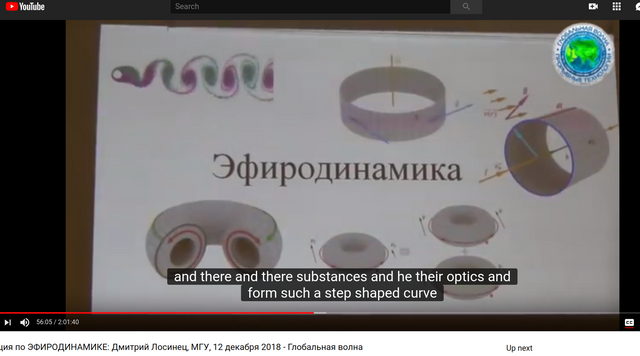
Downvoting a post can decrease pending rewards and make it less visible. Common reasons:
Submit
Comment from Dr. Alexander Parkhomov
Downvoting a post can decrease pending rewards and make it less visible. Common reasons:
Submit
Congratulations @mfmp! You received a personal award!
Click here to view your Board
Downvoting a post can decrease pending rewards and make it less visible. Common reasons:
Submit
More detail about iron spheres in crop circles
Downvoting a post can decrease pending rewards and make it less visible. Common reasons:
Submit